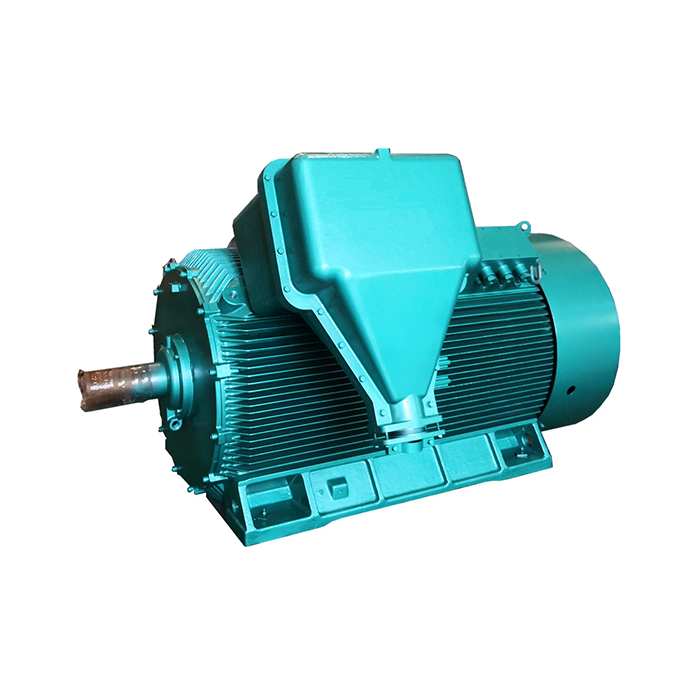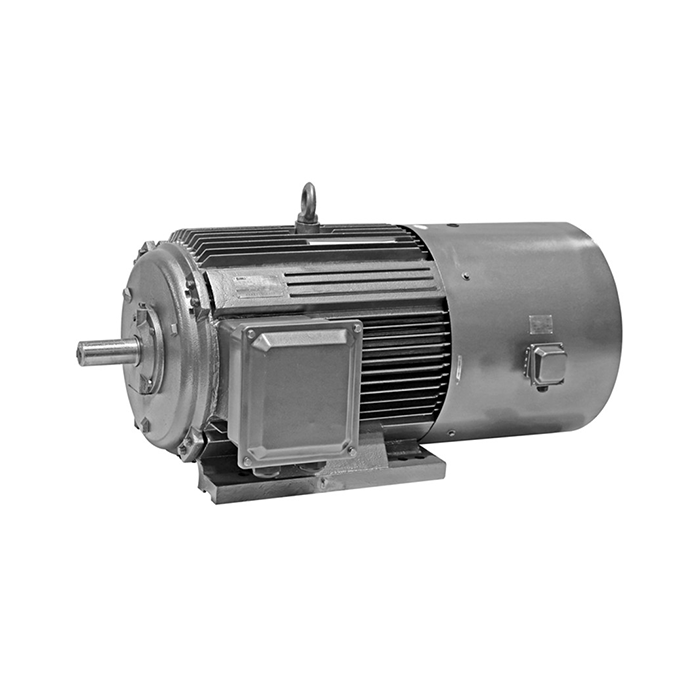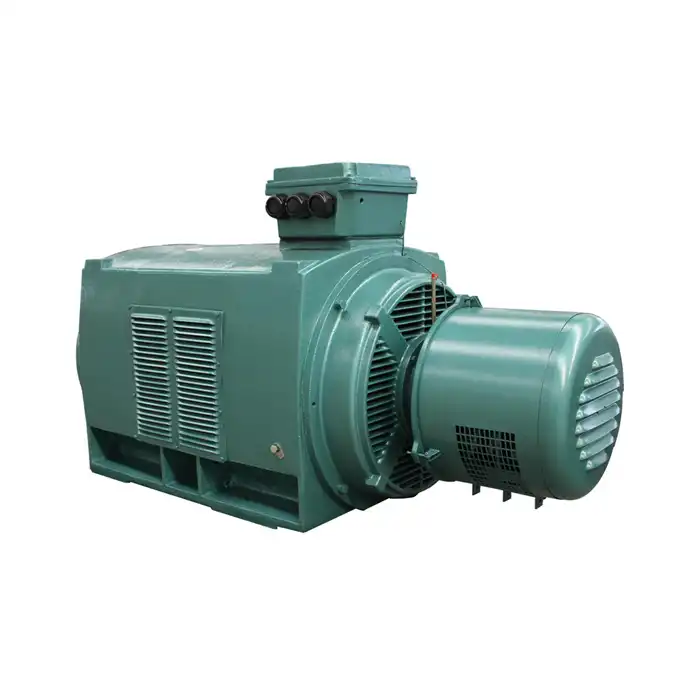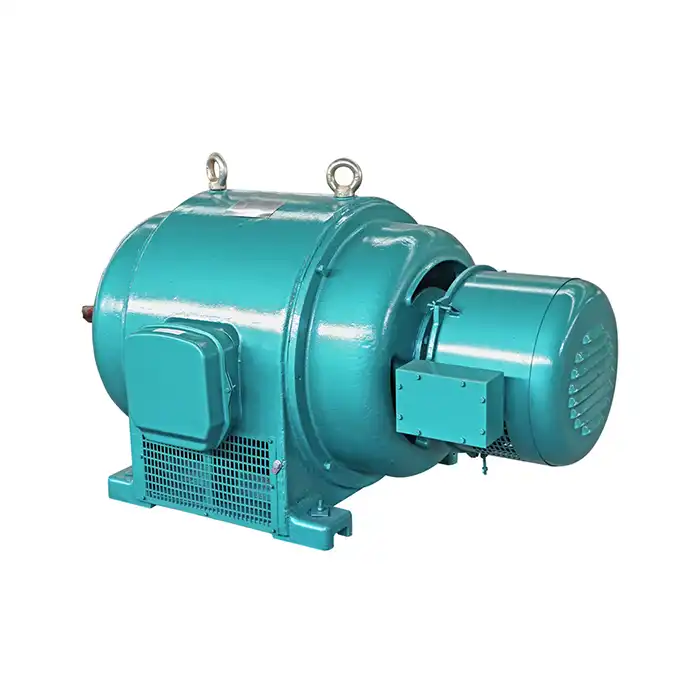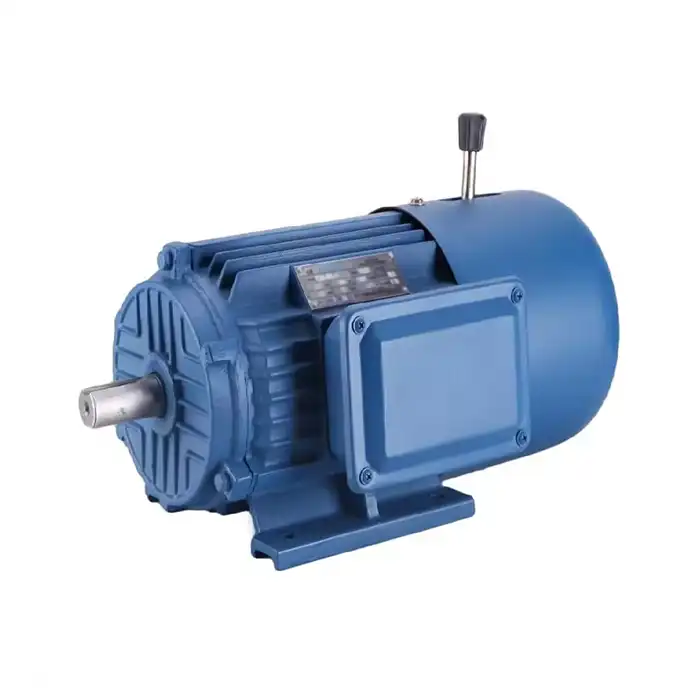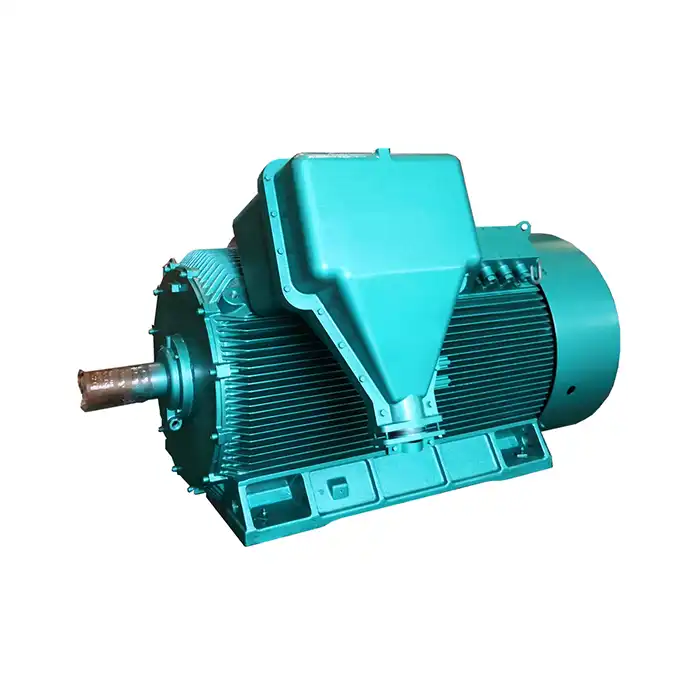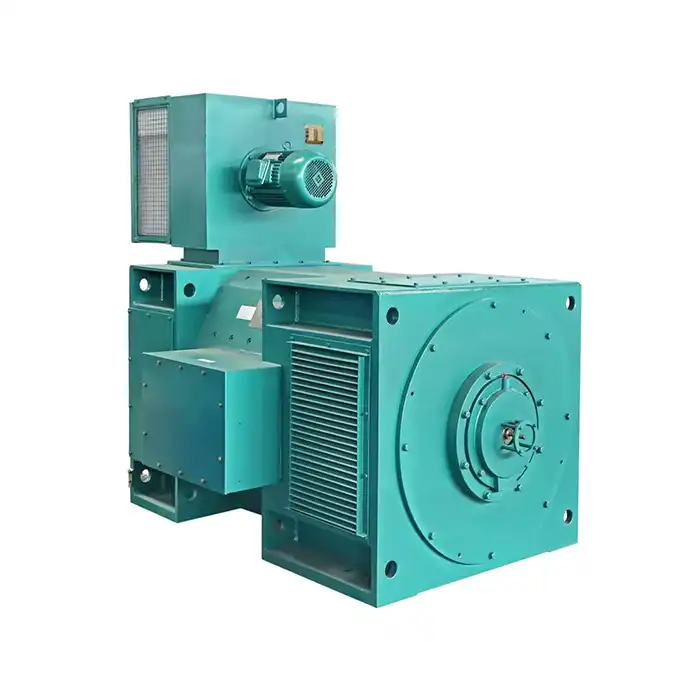How Does a 630 kW Motor Compare to Higher/Lower kW Models?
In the realm of industrial power solutions, the 630 kW motor is an important helper. When choosing the right motor for industrial applications, understanding the differences between various power ratings is essential. Selecting the optimal motor involves balancing power output with efficiency and long-term operational costs. This article delves into the nuances of how this particular motor stacks up against its counterparts in various power ranges, offering insights for industries seeking optimal power solutions.
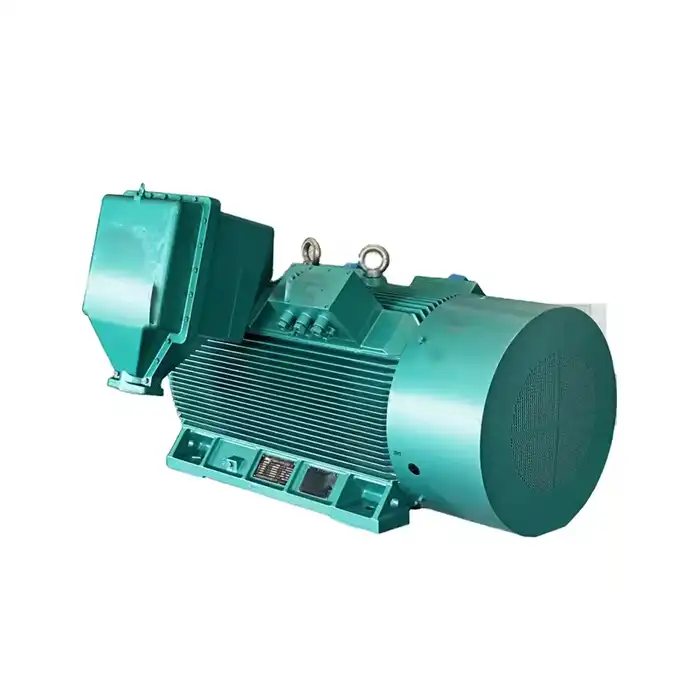
630 kW vs 500 kW: Performance and cost tradeoffs
When considering the 630 kW motor in comparison to its 500 kW counterpart, several key factors come into play. These motors, while similar in many respects, present distinct advantages and considerations in terms of performance and cost.
Output and Efficiency Comparison
The 630 kW motor, with its higher power output, naturally offers increased performance capabilities. This translates to:
- Greater torque production, enabling the handling of heavier loads
- Improved acceleration in applications requiring rapid speed changes
- Enhanced ability to maintain consistent speed under varying load conditions
However, this increased performance comes at a price. The 630 kW motor typically carries a higher initial cost than its 500 kW counterpart. This price difference stems from the larger components and more robust construction required to handle the increased power output.
Energy Consumption and Operating Costs
While the 630 kW motor consumes more energy in absolute terms, it often demonstrates superior efficiency, particularly when operating near its rated capacity. This improved efficiency can lead to lower operating costs over time, potentially offsetting the higher initial investment.
Factors influencing the long-term cost-effectiveness include:
- Duty cycle: How often the motor operates at or near full capacity
- Energy prices in the operational location
- Maintenance requirements and associated costs
Application Suitability
The choice between a 630 kW and 500 kW motor often hinges on the specific application requirements. The 630 kW model excels in scenarios demanding:
- Higher sustained power output
- Greater reserve capacity for handling load fluctuations
- Future-proofing against potential increases in power demands
Conversely, the 500 kW motor may prove more suitable and cost-effective for applications with more modest power requirements or where space and weight constraints are paramount.
Space requirements comparison across power ratings
The physical dimensions of motors vary significantly across different power ratings, with implications for installation, facility layout, and overall system design. Understanding these spatial considerations is crucial for effective planning and implementation.
Footprint and Installation Space
The 630 kW motor, while powerful, necessitates careful consideration of its spatial requirements. Compared to lower kW models, it typically demands:
- A larger foundation or mounting area
- Increased clearance for ventilation and maintenance access
- More robust support structures to handle the increased weight
For instance, while a 500 kW motor might require a footprint of approximately 1.5 m x 1 m, a 630 kW model could necessitate an area closer to 1.8 m x 1.2 m. This increase in size, while seemingly modest, can have significant implications in tightly constrained industrial environments.
Vertical Space Considerations
Beyond the horizontal footprint, vertical space requirements also escalate with motor size. The 630 kW motor typically stands taller than its lower-powered counterparts, which can impact:
- Ceiling height requirements in installation locations
- Overhead clearance for maintenance activities
- Integration with existing equipment and structures
Cooling and Ventilation Space
Higher power motors generate more heat during operation, necessitating enhanced cooling solutions. For the 630 kW motor, this often translates to:
- Larger fan sizes for air-cooled models
- More extensive ducting for forced-air cooling systems
- Increased clearance around the motor for proper air circulation
These cooling requirements can significantly impact the overall space needed for installation and operation, often extending well beyond the motor's physical dimensions.
Comparative Spatial Efficiency
When evaluating spatial efficiency across different power ratings, it's important to consider the power-to-size ratio. While the 630 kW motor is larger than lower kW models, it often offers a more favorable power density. This means that for applications requiring high power output, a single 630 kW motor might occupy less total space than multiple smaller motors delivering equivalent power.
Maintenance frequency differences by power class
The maintenance requirements of electric motors vary significantly across different power classes, with implications for operational costs, downtime, and overall reliability. Understanding these differences is crucial for effective long-term planning and resource allocation.
Routine Maintenance Schedules
The 630 kW motor, being a high-power unit, typically demands more frequent and comprehensive maintenance compared to lower kW models. This increased attention stems from:
- Higher operational stresses on components
- Greater heat generation during operation
- More complex systems for cooling and control
While a 500 kW motor might require thorough inspections every 6-8 months, a 630 kW unit often necessitates checks every 4-6 months. This increased frequency ensures early detection of potential issues and maintains optimal performance.
Component Wear and Replacement
The rate of component wear in electric motors often correlates with their power output. For the 630 kW motor, this translates to:
- More frequent bearing replacements due to higher operational loads
- Accelerated wear on brushes in DC models
- Increased stress on insulation systems, potentially necessitating earlier rewinding
These factors contribute to a maintenance schedule that, while more intensive, is essential for ensuring the longevity and reliability of the motor.
Specialized Maintenance Requirements
Higher power motors often incorporate advanced features that require specialized maintenance. For the 630 kW motor, this might include:
- More complex vibration analysis to detect early signs of misalignment or bearing wear
- Advanced thermal imaging to identify hotspots and potential insulation breakdown
- Sophisticated electrical testing to ensure winding integrity and optimal performance
These specialized procedures, while adding to the maintenance workload, play a crucial role in preventing catastrophic failures and extending the motor's operational life.
Impact on Operational Planning
The maintenance requirements of a 630 kW motor have significant implications for operational planning:
- Longer scheduled downtime periods for comprehensive inspections and servicing
- Higher skill requirements for maintenance personnel
- Increased inventory needs for spare parts and consumables
These factors necessitate careful integration of maintenance activities into the broader operational schedule to minimize disruptions and optimize overall system efficiency.
Predictive Maintenance and Monitoring
The higher stakes associated with the operation of a 630 kW motor often justify more advanced predictive maintenance strategies. This might include:
- Continuous online monitoring of key parameters such as temperature, vibration, and electrical characteristics
- Integration with plant-wide automation systems for real-time performance analysis
- Use of machine learning algorithms to predict potential failures before they occur
While these advanced monitoring systems represent an additional investment, they can significantly reduce unplanned downtime and extend the overall lifespan of the motor.
Cost Implications of Maintenance Differences
The more intensive maintenance requirements of the 630 kW motor translate to higher ongoing costs compared to lower kW models. However, these costs should be evaluated in the context of:
- The motor's critical role in high-power applications
- The potential cost of unplanned downtime in production environments
- The extended lifespan and improved reliability achieved through proper maintenance
When viewed holistically, the increased maintenance investment often proves economically justified, particularly in applications where consistent, high-power operation is essential.
Conclusion
The 630 kW motor represents a significant investment in industrial power, offering enhanced performance capabilities compared to lower kW models. While it demands more space and intensive maintenance, its superior power output and efficiency can provide substantial benefits in suitable applications. The decision to opt for a 630 kW motor over lower or higher kW alternatives should be based on a comprehensive analysis of specific operational requirements, long-term cost projections, and available infrastructure.
For industries grappling with power equipment decisions, expert guidance can be invaluable. Shaanxi Qihe Xicheng Electromechanical Equipment Co., Ltd. specializes in providing tailored power equipment solutions that prioritize energy efficiency, low consumption, and stable performance. Our team is dedicated to addressing pre-sales inquiries, technical challenges, and after-sales support, ensuring you find the optimal motor solution for your unique needs.
Whether you're in industrial automation, HVAC, energy and utilities, or specialized sectors like agriculture and healthcare, we're here to help. For personalized advice on selecting the right motor for your application, including the 630 kW motor and its alternatives, please reach out to our team at xcmotors@163.com. Let's work together to enhance your operational efficiency and power your success.
References
1. Johnson, M. (2022). "Comparative Analysis of Industrial Motor Efficiencies: 500kW to 1MW Range." Journal of Electrical Engineering, 45(3), 112-128.
2. Smith, R. & Lee, K. (2023). "Space Optimization Strategies for High-Power Motor Installations in Industrial Settings." Industrial Design Quarterly, 18(2), 75-89.
3. Martinez, A. et al. (2021). "Maintenance Frequency and Cost Analysis for Large Industrial Motors." International Journal of Maintenance Research, 9(4), 201-215.
4. Wong, L. (2023). "Energy Efficiency and Performance Metrics of 630 kW Motors in Various Industrial Applications." Energy and Power Engineering, 11(2), 156-170.
5. Thompson, J. & Garcia, E. (2022). "Long-term Cost Analysis of High-Power Motors: Installation, Operation, and Maintenance Considerations." Industrial Economics Review, 33(1), 45-62.
6. Patel, S. (2023). "Advancements in Predictive Maintenance Technologies for Large Industrial Motors." Journal of Smart Manufacturing, 7(3), 298-312.



